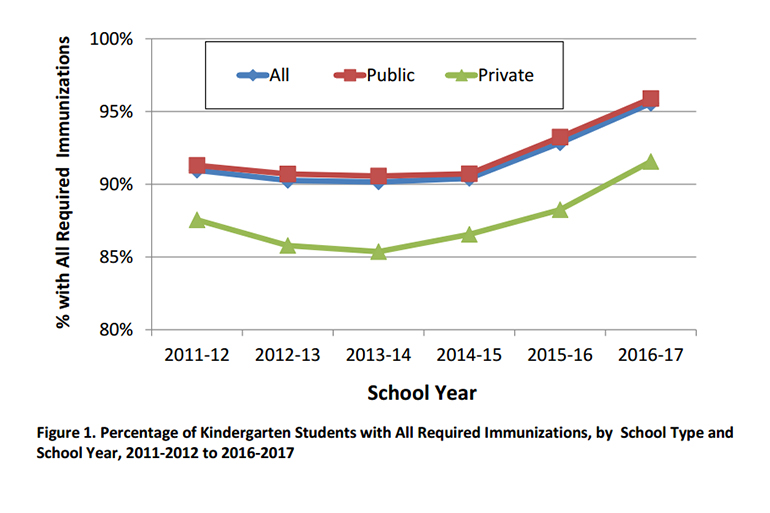Vaccination rates among kindergartners are at their highest since 2001, according to the California Department of Public Health. Compared with the 2015-2016 school year, the percentage of students attending kindergarten in 2016-2017 who had received all required vaccines rose from 93 percent to 96 percent.
The department listed the following as possible reasons for the improvement:
- Efforts by state and local health departments, schools and community organizations to support school immunization requirements.
- Increased awareness of the importance of immunizations due to highly visible outbreaks in recent years, including one in which scores were infected at Disneyland.
- State audits of schools in 2016 and 2017 to ensure compliance with immunization laws.
- The impact of Senate Bill 277 of 2015 and Assembly Bill 2109 of 2012, which sought to improve the state’s vaccination rates. Students entering school in the 2016-2017 school year were the first to be subject to SB 277, which ended personal beliefs exemptions for vaccination.
Despite the statewide improvements, state health department officials said that schools and communities with low vaccination rates remain at risk for outbreaks. About 18 percent of California schools reported that fewer than 95 percent of their kindergartners had at least two doses of measles, mumps and rubella vaccine. One percent of schools reported that fewer than half of their students had met that standard.


